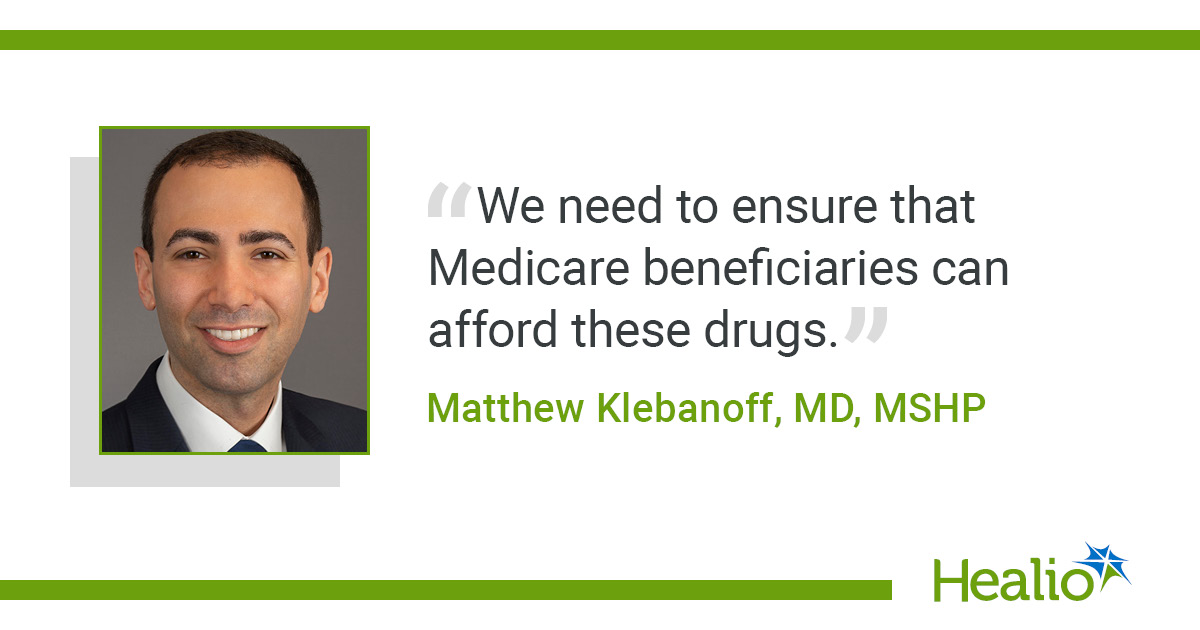September 24, 2025
3 min read
Key takeaways:
- Medicare Part D beneficiaries had an increase in out-of-pocket spending for GLP-1s approved for diabetes in 2025.
- Nearly all Medicare Part D plans required prior authorization for GLP-1s in 2025.
Medicare Part D beneficiaries experienced a large increase in out-of-pocket spending for GLP-1s in 2025, according to findings published in a JAMA research letter.
In an analysis of data from Medicare Part D files between 2020 and 2025, researchers found a rise in the need for prior authorization, out-of-pocket costs and coinsurance requirements for GLP-1s in 2025 compared with prior years. Matthew Klebanoff, MD, MSHP, assistant professor of medicine in the division of general internal medicine at the University of Pennsylvania Perelman School of Medicine, said these trends may be due to increased financial liability that Medicare Part D plans are facing after the Inflation Reduction Act was signed into law in 2022.

“Higher out-of-pocket costs will prevent some patients from starting GLP-1s to treat medical conditions like diabetes or heart disease,” Klebanoff told Healio. “Increasing costs may force others to stop treatment they’ve already started. This is especially concerning for Medicare beneficiaries, who are often on fixed incomes.”
Researchers obtained data assessing Medicare Part D plans that covered GLP-1s, whether those plans required prior authorization or coinsurance and the average monthly out-of-pocket costs for beneficiaries. Drugs assessed in the study were GLP-1s approved for diabetes: subcutaneous semaglutide (Ozempic, Novo Nordisk), oral semaglutide (Rybelsus, Novo Nordisk), tirzepatide (Mounjaro, Eli Lilly), dulaglutide (Trulicity, Eli Lilly), brand-name liraglutide (Victoza, Novo Nordisk) and generic liraglutide. Researchers also searched for plans that covered semaglutide for the treatment of cardiovascular disease (Wegovy, Novo Nordisk) and tirzepatide for the treatment of obstructive sleep apnea (Zepbound, Eli Lilly).
In 2025, at least 84.8% of Medicare Part D plans covered dulaglutide, oral and subcutaneous semaglutide and tirzepatide for the treatment of diabetes. Coverage of brand-name liraglutide fell to 7.1% in 2025 due to the availability of generic liraglutide. No plans covered tirzepatide for obstructive sleep apnea, and 1% of plans covered semaglutide for CVD.
Prior authorization for GLP-1s was only required for 2.8% to 5% of Medicare Part D plans in 2023. By 2025, nearly all plans required prior authorization for the drugs.
Out-of-pocket costs increase
In an analysis of dulaglutide, brand-name liraglutide, injectable semaglutide and tirzepatide, monthly out-of-pocket costs in 2024 ranged from $75 for dulaglutide to $138 for brand-name liraglutide. Out-of-pocket costs increased in 2025, ranging from $122 for dulaglutide to $167 for brand-name liraglutide.
Use of coinsurance for GLP-1s was between 27% and 36% for those four medications in 2024. Coinsurance use rates rose to between 49% and 77% in 2025.
For stand-alone Medicare Part D plans, monthly out-of-pocket costs were between $99 and $109 for most GLP-1s in 2024. In 2025, those monthly out-of-pocket costs rose to between $175 and $196. For Medicare Advantage Part D plans, monthly out-of-pocket costs for most GLP-1s increased from between $52 and $64 in 2024 to between $93 and $101 in 2025.
Affordability a concern
Klebanoff said the study has implications that go beyond Medicare beneficiaries with diabetes. He noted that monthly out-of-pocket costs for the few Medicare Advantage Part D plans covering semaglutide for CVD averaged $246, much higher than the out-of-pocket costs for GLP-1s approved for diabetes.
“Even though Wegovy contains the same active ingredient as Ozempic, patients faced much higher out-of-pocket costs for the version approved for CVD,” Klebanoff said. “This gives us a preview of what might happen if Medicare expands coverage for GLP-1s to include new indications like obesity: Plans might provide coverage but make these drugs less affordable by requiring high cost-sharing.”
Klebanoff added that the study showed the importance of assessing the financial implications of policy changes for patients.
“There’s tremendous policy interest in expanding Medicare coverage for GLP-1s to include patients trying to lose weight,” Klebanoff said. “But our study shows that even when Medicare covers these medications for currently approved indications like diabetes, they may be becoming less affordable. Providing coverage isn’t enough — we need to ensure that Medicare beneficiaries can afford these drugs.”
For more information:
Matthew J. Klebanoff, MD, MSHP, can be reached at matthew.klebanoff@pennmedicine.upenn.edu or on Bluesky @mattklebanoff.









